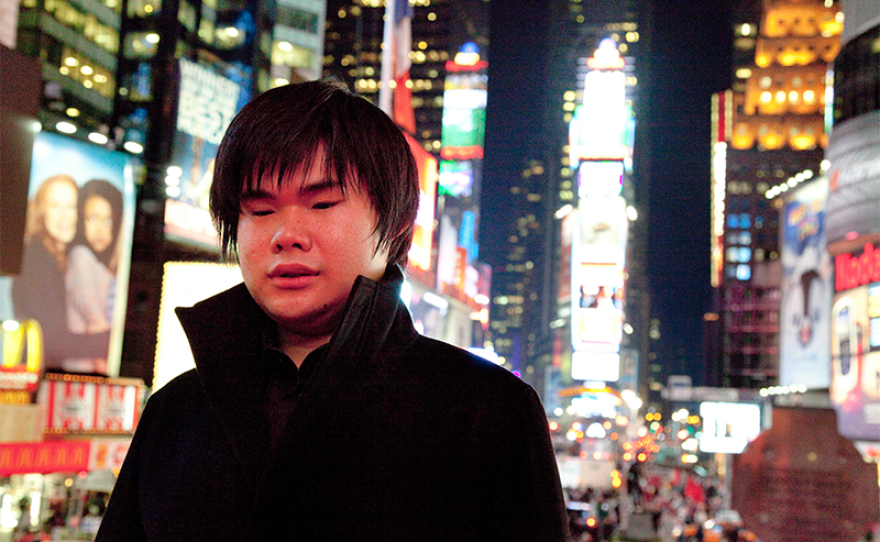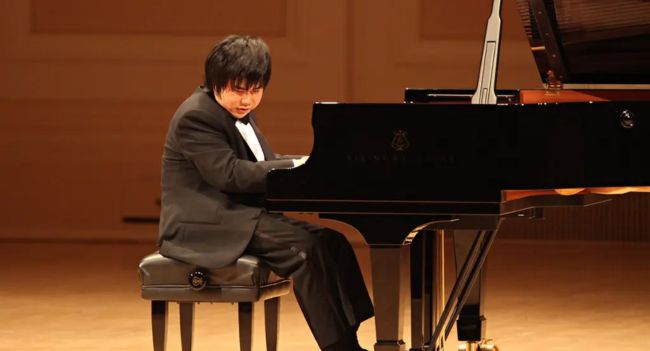Undeterred by his lifelong blindness, pianist Nobuyuki Tsujii has an extraordinary ability to connect with audiences around the world, transcending cultural obstacles and inspiring concert-goers and music critics with a feeling Time magazine coined “Nobu Fever.”
“Touching The Sound” traces the artistic development of this remarkable young musician, from an early ability to play piano by ear, to his gold medal triumph in the 2009 Van Cliburn International Piano Competition, to his debut at Carnegie Hall.
The documentary also follows Tsujii as he tours the tsunami-devastated coastline of Tohoku, Japan, hoping to bring solace through his music to those impacted by the 2011 catastrophe, which killed 20,000 people and displaced hundreds of thousands of families.
Featuring plentiful clips of Tsujii performing throughout his childhood, and set against the music of Chopin, Beethoven, Rachmaninoff, Liszt and Tsujii’s own uplifting compositions, “Touching The Sound” highlights the power of music in overcoming hardship.

The 23-year-old pianist Nobuyuki Tsujii, blind from birth, is said to have achieved pop-star status in his native Japan since he shared the gold medal at the 2009 Van Cliburn International Piano Competition with Haochen Zhang, from China.
To judge from the row of television cameras at Carnegie Hall on Thursday evening, when Mr. Tsujii made his New York recital debut, there is certainly considerable interest in his developing career. Mr. Tsujii, the first Japanese musician to win that prestigious event, is a recent graduate of the Ueno Gakuen University, a music academy in Tokyo. He learns music with Braille scores or by listening to recordings made especially for him, which include codes and instructions.
His achievements are considerable; it is remarkable that he has attained an impressive technique that enables him to navigate the keyboard confidently and accurately in difficult repertory. He made only a few slips on Thursday evening in his program of overplayed pianistic favorites and one new piece.

But probing depth and a sense of spontaneity are missing, perhaps inevitably, since Mr. Tsujii must precisely calculate every move to ensure that his fingers are above the correct keys. This was noticeable in works by Liszt, including “Un Sospiro” from the Three Concert Études and the “Rigoletto” Concert Paraphrase, both marred by stilted phrasing, as was the rendition of Beethoven’s “Tempest” Sonata.
Mr. Tsujii demonstrated his impressive technique again after intermission with Mussorgsky’s ever popular “Pictures at an Exhibition,” although he could have paid more heed to musical details like the grandeur of the theme in “The Great Gate of Kiev.”
The program began with John Musto’s appealing “Improvisation and Fugue,” composed for the 2008 New York International Piano Competition and also a competition piece at the 2009 Cliburn event. Mr. Tsujii played it with flair here, lingering on the bluesy harmonies of the opening section and darting up and down the keyboard with panache in the lightning-fast runs that come later.
Mr. Tsujii is also a composer; the encores included his arrangement of Stephen Foster’s “Jeanie With the Light Brown Hair” and Mr. Tsujii’s “Elegy for the Victims of the Earthquake and Tsunami of March 11, 2011,” as well as a nuanced reading of Chopin’s “Raindrop” Prelude.
